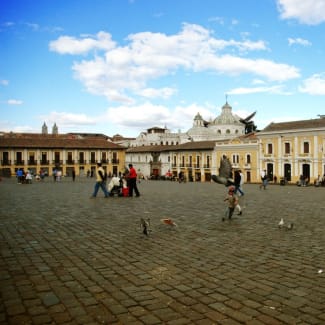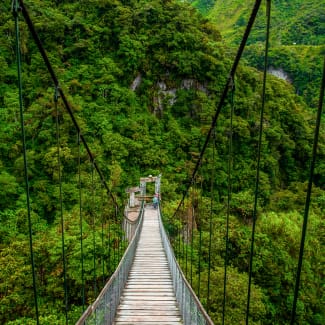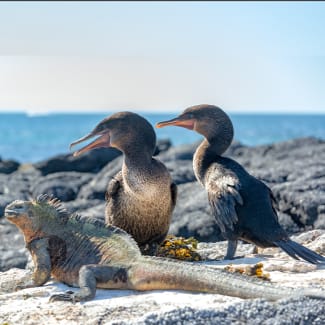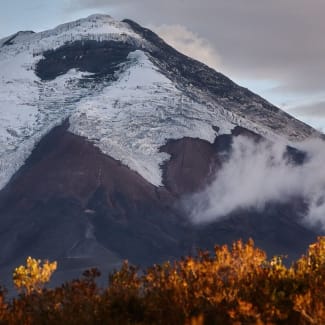

-
Adventure
Overview
Explore the amazing natural wonders of Ecuador in this 14-day Galapagos & Cotopaxi Expedition tour. Adventurous excursions take you to the Andean highlands, misty cloud forest, and to the famed Galapagos Islands, all filled with unique landscapes and opportunities to observe exotic wildlife while also staying in upscale comfort.
Cotopaxi Expedition in the Andes
Your adventure begins from the capital city of Quito, with our expert guides leading you on incredible hikes to nearby valleys, mountains, and canyons. To start, you’ll be transported to the highest cable car in South America, and from its last stop, you’ll take your first hike up Rucu Pichincha for incredible views.
A hike to the Chilcabamba Lodge, an ecolodge located on the edge of the famous Cotopaxi National Park, is to follow. Adventure soon heats up as you make your way closer to Mt. Cotopaxi, learning about the history of this volcanic area and catching glimpses of llamas, wild deer, and breathtaking scenery along the way.
After days of mountain trekking, you’ll head to the gorgeous spa city of Baños and enjoy its many waterfalls, natural beauty, and mineral-rich hot springs. A journey into the clouds is next, as you enjoy the ride to the cloud forest of Mindo, famous for its orchids, butterflies, and bird population. Your accommodations await here in the El Monte Ecolodge, which is surrounded with numerous hiking and birdwatching opportunities, as well as opportunities to go rafting or horseback riding.
Galapagos Expedition
After a relaxing night in Quito, it’s time to head into the second part of your adventure tour. A short flight lands you on Baltra Island to begin your spectacular Galapagos expedition. At the harbor, you’ll find the Treasure of Galapagos waiting for you to board.
This twin-hulled, first-class catamaran offers luxury accommodations during your island explorations. All cabins include air-conditioning, hot showers, and private balconies. For additional space to spread out, you might want to reserve the one Master Suite onboard for additional comfort.
The highlights of this expedition are the islands themselves and the various unique landscapes and exotic wildlife that inhabit them. For the next five days, excursions to the differing islands of the archipelago will amaze and intrigue.
Marvel at the volcanic scenery of the islands, including lunar-like craters, lava fields, and the volcanoes themselves. Stroll along breathtaking beaches, some with marine turtles, Galapagos penguins, or sea lions. Admire the blue-footed boobies, various frigate birds, land and marine iguanas, and many others. You’ll also have opportunities to swim or snorkel the waters surrounding the islands.
As your 2 weeks in Ecuador and Galapagos comes to a close, and before you fly back to the mainland, a visit to the Galapagos National Park Visitor Center provides you with one last opportunity to learn even more about these enchanting islands.
Itinerary & Prices
All itineraries are subject to change due to seasonal weather conditions (and resultant variations in river and tributary water levels) affecting accessibility to locations. Thus navigation routes, times and excursions may need to be modified at the cruise captain’s or your guide's discretion.
Arrival to Quito
You arrive in the historical city of Quito and are transferred to your hotel in the comfort of our private, air-conditioned vehicle. Quito is the most populous city in Ecuador, and the second-highest capital city in the world. Founded in 1534 by Spanish Conquistadors, it is nestled in the lower Andes mountain range, creating quite a dramatic backdrop to the colonial architecture of the center and the more modern suburbs, which sit in the rocks of the mountains themselves. Quito is located a short drive south of the equator – Ecuador is, in fact, the Spanish word for the equator, the city sits on the eastern slope of the Pichincha volcano.
Quito lies in the valley of the Guayllabamba River, flanked by volcanoes, many of which are snow-capped, and visible from the city on a clear day. Quito’s altitude is listed at 2,820 meters (9,250 feet). The colonial influence is strong in the traditional center of the city and any visit to Quito should include a stroll around this area, which was one of the world’s first UNESCO World Heritage Sites. Buildings of particular interest being the Carondelet Palace, the Cathedral, the four main churches, and the Basilica del Voto Nacional. The center of Quito is the most untouched and also the biggest colonial center of any city in the Americas.
Meals (x)

A Journey Through the Clouds
After breakfast, we are picked up for a ride to Mindo, sopping at the Pahuma Orchid Reserve.
Mindo is a village in the Andean cloud forests north of Quito. It is famous for its numerous species of birds, butterflies, and orchids (more than 370) found in the reserve. Along the route, we will visit a butterfly garden, where we will have the opportunity to observe numerous species, and learning about the four stages of their life cycle. We will also see a rich collection of orchids, some with blossoms so small a magnifying glass can be required! It is not uncommon to observe hummingbirds buzzing around the area, jostling for a few moments at the feeders.
The lodge is located just outside the town of Mindo – recognized as a world-class bird-watching site by BirdLife International – and on arrival, you will be welcomed by your hosts who will show you to your rooms and offer a short informal introduction to the lodge and its nearby garden. The evening can be spent relaxing in preparation for the next day’s adventures.
Meals (B, L)

Mindo Forest & Chocolate Tour
Today we will make an early start to visit our ´cock of the rock´ lek, a place where these marvelous birds congregate to feed.
Sometimes described as a “singles bar”, a lek is a meeting place for male and female birds. The singles bar description seems even more appropriate when you consider that the males dance wildly and engage in all sorts of displaying behavior. Not all bird species use leks, in fact, most don’t, but ones that do include grouse, some hummingbirds, Cock-of-the-Rocks… among others.
After a nourishing breakfast, we will walk along the heights of the stunning San Lorenzo Mountain Range, while we walk, our guide will lead the way, and weather permitting, help us catch a glimpse of spectacular birds such as the Golden-Headed Quetzal, the Choco Toucan and the Crimson Rumped Toucanet, amongst many others.
We will now enjoy a different activity. Ecuador has gone from no chocolate brands for export to dozens in the last 10 or 15 years, despite the fact that Ecuador has always had some of the finest cacao in the world. Cacao only grows in tropical regions and originated in the Amazon Rainforest.
At the factory, a guide will walk you through the entire process of making chocolate, from bean to bar, with tastings along the way. At the chocolate factory there are chances to buy chocolate bars and other products.
At El Monte we process our own cacao to produce cocoa for hot drinks and some desserts. You are invited to watch and even participate in the process.
Meals (B, L, D)
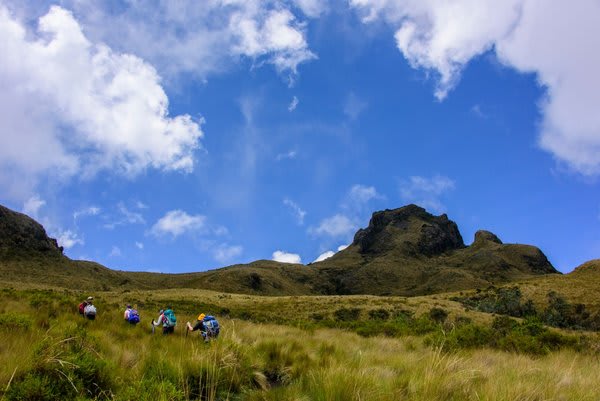
Rucu Pichincha & Teleferico
After breakfast, we are picked up for a day of exciting excursions around Quito.
Cable car ride:
We head to the eastern part of Quito and to the highest cable car in South America. At the ground station, we are at a height under 3000 meters (under 10,000 feet) and we venture up to over 4000 meters (13,000 feet) and the top of the Cruz Loma mountain from where we can see the true scale and magnificence of the Pichincha volcano. Local folklore tells the story of how the volcano watches over and cares for the city and this story really comes into its own when seen from the perspective of the viewing point. From this peak, we also got an amazing view of the city and on a clear day, you get especially fantastic views of Cayambe, Antisana, Cotopaxi, Pasochoa, and Rumiñahui amongst other important mountains.
Hiking Rucu Pichincha:
This is our first hike, and is a relatively straightforward climb and acts as the perfect way to begin your acclimatization in preparation for your days ahead in the Andes. The trail is well-marked and is a full-day excursion. We begin from the last stop on the cable car and take the meandering path as our guide stops to point out landmarks in the city and volcanoes and mountains as they come into view. Pichincha is the closest volcano to Quito and is still active, but don’t worry as it is not likely to erupt any time soon!
Meals (B, L)

Hiking Pasochoa
With heights rising to 4,200 meters (almost 14,000 feet) this is a challenge that will get our engines revving and is a gradual build-up to the second part of our adventure. The approach is not difficult, and our hike to the peak will take about 3 hours over grassland trails and a backdrop of dramatic mountainous scenery. From Pasochoa you will get a spectacular view of the mountains surrounding Quito, the striking views of the crater below, and the impressive surrounding mountain crests of Antisana, Sincholagua, Quilindaña, Cotopaxi, Rumiñahui, Corazón, and the twin Iliniza peaks.
The second part of our day consists of the descent to the Pedregal Valley, a downhill walk of about 3 hours through grassland, ending at the cozy Chilcabamba Lodge, situated at about 3,200 meters (10,500 feet) above sea level. The Chilcabamba Lodge is situated right on the edge of the Cotopaxi National Park and offers picturesque bike rides and short walks or horse treks to the Rio Pita and is one of the foremost ecolodges of Ecuador, with close ties to the local community.
Meals (B, L, D)

Cotopaxi Trail
Today we head to Cotopaxi National Park, one of Ecuador’s most important and interesting National Parks.
On a clear day, it is possible to see Cotopaxi’s peak from parts of Quito, but the views from the park itself offer a totally different type of experience.
The views of the snow-capped almost-symmetrical cone-like summit are truly awe-inspiring and present a truly breathtaking backdrop. The hike proper begins at the Rio Pita river which provides essential drinking water to hundreds of thousands of Quiteños (as Ecuador’s capital city residents are known); its source is the pristine glacial meltwater of Mt. Cotopaxi. The Pita’s rushing waters will accompany us throughout much of our adventure.
The hike enters Cotopaxi National Park and we head towards an archeological site called Pucara de Salitre, an area known for the plethora of migrant and resident Andean birds.
On the way keep your eyes peeled for the wild deer and llamas that make the park their home, as well as the gorgeous seasonal mountain wildflowers and breathtaking scenery. We end with a wonderfully rewarding view of Mt. Rumiñahui reflected in the pristine waters of the Pita river and to the other side spectacular views of Cotopaxi rising high over the skyline. During our adventure, we will stop to enjoy a picnic in the crisp alpine environment.
Meals (B, L, D)
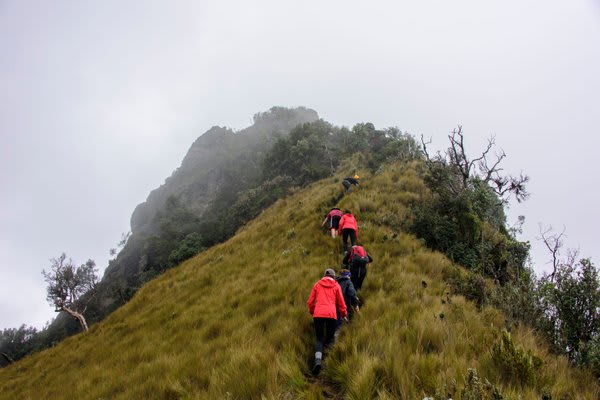
On the Snow Line
After a hearty breakfast, we set off from the lodge and drive in our private vehicle to the parking area of the Cotopaxi mountain refuge. We will then walk for approximately an hour with a visit to the mountaineers’ lodge the first stop on our agenda. Once there we take a second to admire the views before beginning the next stage of our day’s hiking, a walk to the edge of the glacier, a trip of approximately two hours.
Here we enjoy another quick stop to enjoy the views from the northern side of the mountain, which offers a spectacular panorama. At this point, it is interesting to identify (with the help of our guide) all the ground we have covered since the first day of our adventure: Quito, its valleys, the distant mountains in the north, and the road from Pasochoa, through the Pita canyon, to el Pedregal, Sincholagua, Rumiñahui, and the magnificent Limpiopungo valley.
The last stage of our day’s hiking is the descent, which will take approximately 2 hours, takes the same route back to the parking lot and we head to our hotel in Baños.
Meals (B, L, D)
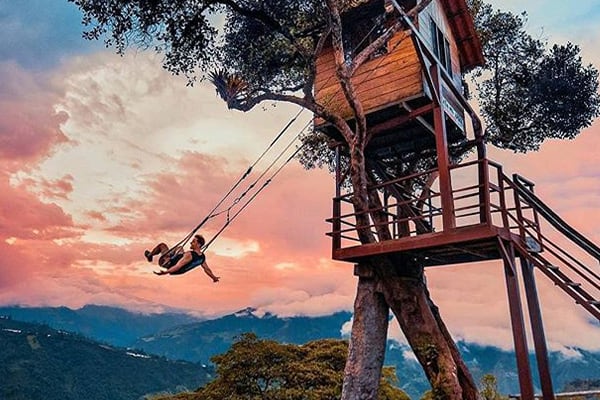
The Waterfalls of Baños
Today we enjoy a full day of excursions in the beautiful spa city of Baños. The journey itself is extremely picturesque and the route carries some spectacular views as we pass through mountains, valleys, and little towns. We take advantage of the proliferation of waterfalls in this region to do a small tour of these spectacular cascades including the Manto de la Novia and Pailon del Diablo waterfalls. As part of the tour, we cross the valley in a cable car used by the locals for transport across the valley and enjoy the views offered by this alternative means of transport
Upon arrival in Baños, so-called for the hot springs that surround the town that is said to have healing powers due to the minerals in the water, these waters are said to have huge health benefits and are rich in sulfates, sodium, calcium, chloride, and traces of magnesium which are odorless, colorless but have a slightly salty taste, and as such have been used throughout the centuries for healing and relaxation purposes by the local communities.
Meals (B, L, D)
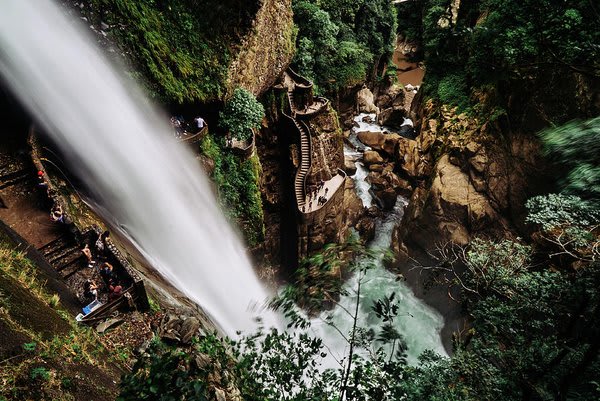
Returning to the Highlands
Before leaving, we will visit at a magical place: the Baños swing. Located on top of a mountain, it offers a wonderful view between the mountains and the valley.
What started as a seismic monitoring station in a tree to observe Mt. Tungurahua, the nearby active volcano, the famous swing has become a place to admire the incredible views of the area and watch the brave daredevils swing over the canyon for a thrilling ride.
In the way back to Quito, we will travel to a traditional indigenous marketplace in the Cotopaxi area. Local markets are part of Ecuadorian traditional culture; the places where indigenous communities buy food and accessories; this is a real contrast to how we shop in our regular supermarkets.
Meals (B, L)

Departing Quito & Cruise Embarkation
AM: After breakfast, at the scheduled time, you will be picked up from your hotel and privately transferred to Quito airport, ready to board your departure flight to the Galapagos Islands!
Upon arrival at Baltra Airport, you will pass through an airport inspection point to insure that no foreign plants or animals are introduced to the islands, as well as to pay the park entrance fee of $100 (unless it has been prepaid). A guide will meet you, help you collect your luggage, and escort you on a short bus ride to the harbor.
PM: Although the great majority of Galapagos visitors come here to observe and appreciate natural wonders in the wild, on Santa Cruz one of the main attractions is the Charles Darwin Research Station where baby giant tortoises are raised in captivity. You can also see giant tortoises and land iguanas here, as well as checking out interesting exhibits that explain how the protection and conservation of the islands are carried out.
Meals: (B, L, D)
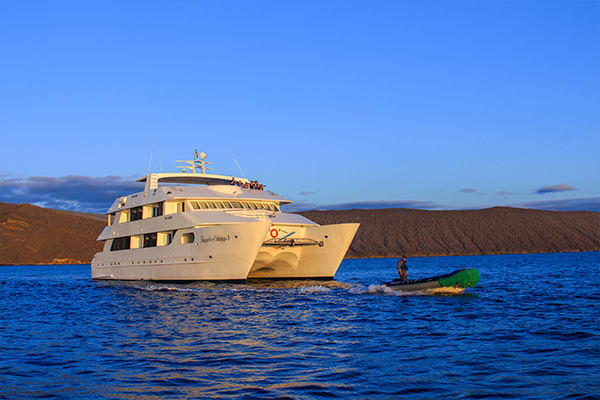
Sullivan Bay & Bartolome Island
AM: Santiago, also called James Island, is located in the western-central part of the Galapagos archipelago. It is the fourth largest island in the archipelago (following Isabela, Fernandina and Santa Cruz). Along with some of the large western volcanoes of Isabela and Fernandina,
Santiago is also volcanically active, with many young flows and cones to be seen, particularly along the southern, western, and eastern coasts. These can even be seen from the summit of Darwin Volcano and from space. A number of large eruptions have been reported over the last 2 centuries. Santiago actually consists of two coalesced volcanoes: a typical shield volcano on the northwest end and a low, linear fissure volcano on the southeast end.
PM: Bartolomé Island is situated across Sullivan Bay. It has an altitude of 114 meters, from where we can observe one of the most beautiful sceneries of the Galapagos Islands such as: Volcanic cones, lunar-like craters, lava fields, and the famous Toba formed pinnacle eroded by the sea. There is very little vegetation on this island. It has two breathtaking beaches where marine turtles exist and at the base of the pinnacle, as well as a very small colony of Galapagos penguins.
Meals: (B, L, D)

North Seymour Island & Mosquera Islet
AM: Seymour is an uplifted (as opposed to volcanic) island and therefore is generally flat and strewn with boulders. There are good nesting sites here for a large population of magnificent frigate birds. Blue-footed boobies perform their courtship dance in the more open areas and swallow-tailed gulls perch on the cliff edges. Despite the tremendous surf that can pound the outer shore, sea lions haul out onto the beach and can be found bodysurfing.
Do watch your step as the boobies don’t worry much about where they nest, and you might just step on one. The trees are dotted with male frigate birds trying to attract the attention of the ladies by inflating their bright red skin flaps. They sometimes fly in the air to call more attention to themselves. There’s a circular path that takes you through the island to a beautiful, rocky shore where the waves crash a silvery-blue.
PM: Mosquera Islet is located between Baltra and North Seymour. This is a small islet formed by a geological uplift, with a reef of rocks and coral and a great white sand beach, where lie a big population of sea lions. You can also observe several species of shorebirds. This site offers great snorkeling and swimming. Along the rocks it is common to see the Red Lava crabs and Sally light-foot crabs.
Meals: (B, L, D)
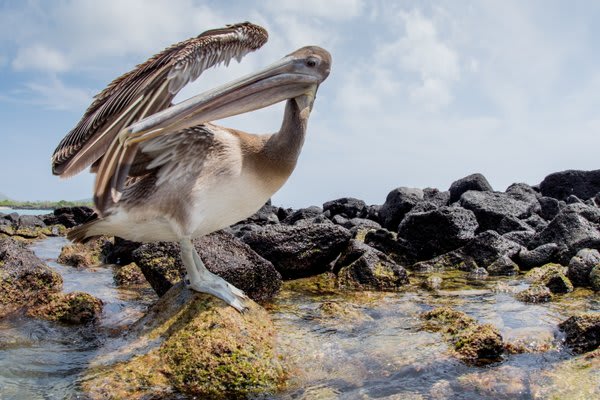
South Plaza & Cerro Brujo
AM: South Plaza is located to the east of Santa Cruz Island, and forms part of a pair of islands known as “Islas Plazas”. Despite its small size, some of the most interesting and outstanding species of the Galapagos are found here. The Plaza’s land iguanas are smaller than their relatives found on other islands.
Throughout the island, there are several hybrid iguanas, a result of crossing a marine iguana with a land iguana. They are unique and recognizable at first glance by their black/gray color, with a land iguana’s crest, but the face and tail of the marine iguana. The big population of iguanas is due to the presence of “tunas”, their favorite food. Swallow-tailed Gulls nesting in the rugged cliffs is seen along with other sea birds as Audubon shearwaters, red-billed tropicbirds, frigate birds, and brown pelicans.
PM: The primary attraction of this site is the coral sand beach. It is an excellent place to swim and snorkel. Cerro Brujo is the remains of a tuff cone. It is one of the first sites visited by Charles Darwin. Captain Fitzroy climbed to the top of the hill to scout out reefs. It has an impressive landscape, where it is often possible to see coastal and migratory birds, including pelicans, Blue-footed Boobies, and Swallow-tailed Gulls, as well as sea lions and marine iguanas. At times the lagoon is completely dry and deposits of salt may be found in the bottom. The people of Puerto Baquerizo Moreno used to use the lagoon as a salt mine.
Meals: (B, L, D)
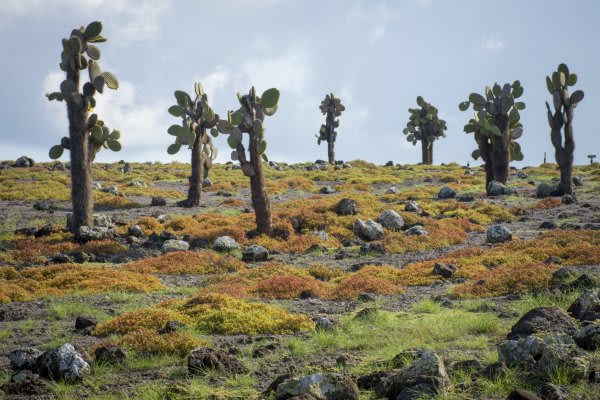
Disembarkation
AM: The Galapagos National Park Visitor Center lies close to the port town of Puerto Baquerizo Moreno. The center explains a series of natural circumstances such as the volcanic origins of the islands, their remoteness from the continent, its ocean currents, its special climate, the arrival of different species, and their establishment, among others.
Afterward, you will be transferred to San Cristobal airport for your flight back to Guayaquil or Quito.
Meals: (B)
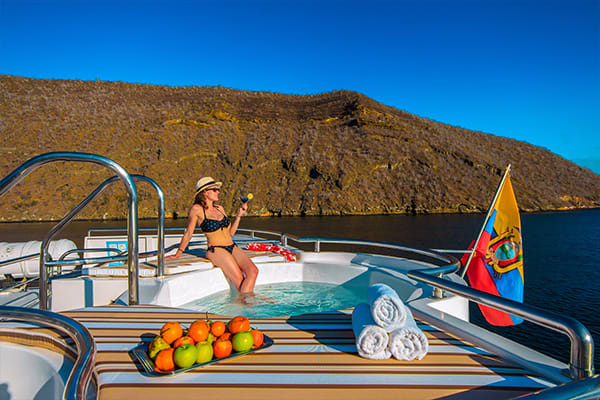
Accommodations
Cruises & Lodges

Treasure of Galapagos
Hotel Options
Patio Andaluz
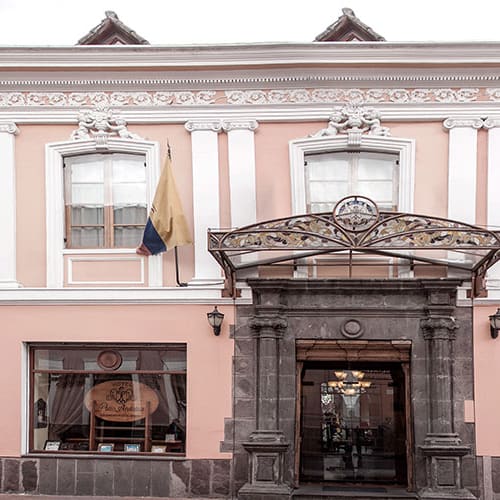
El Monte Lodge

Chilcabamba Mountain Lodge
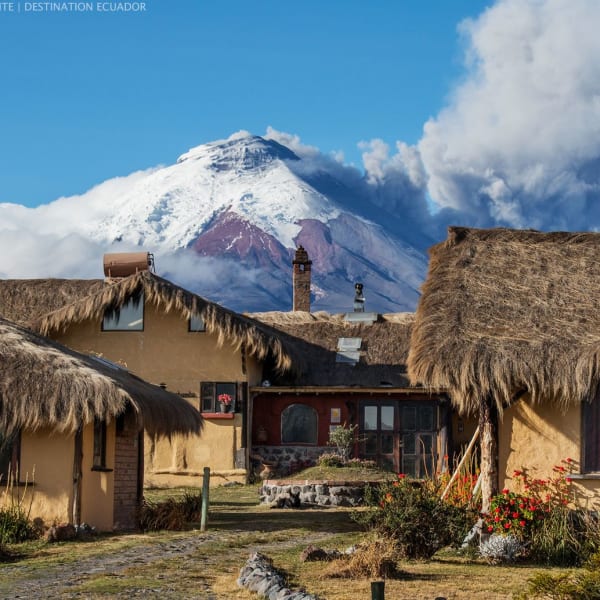
Tambopaxi
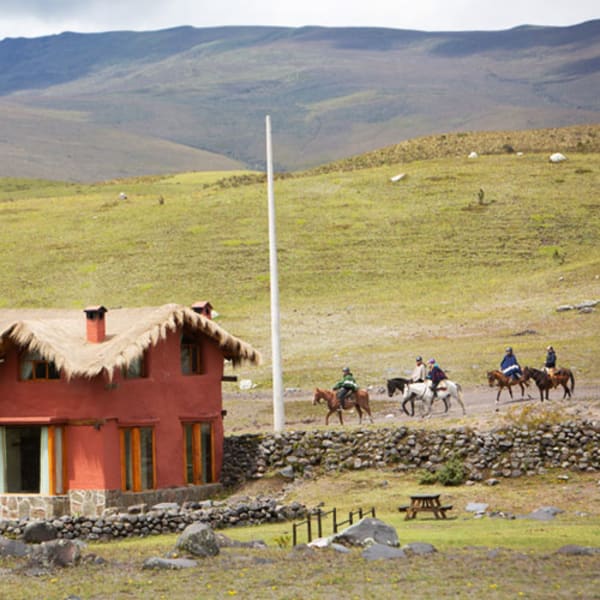
Sangay Spa

Hacienda La Jimenita

Related Tours

- Galapagos
- Machu Picchu
- Ecuador
- Peru
Machu Picchu & Galapagos

- Peru
- Amazon
- Machu Picchu
- Ecuador
- Galapagos
Galapagos, Machu Picchu & Amazon

- Galapagos
- Machu Picchu
- Chile
- Ecuador
- Peru
Galapagos, Easter Island & Machu Picchu

- Peru
- Ecuador
- Galapagos
Inca Trail & Galapagos
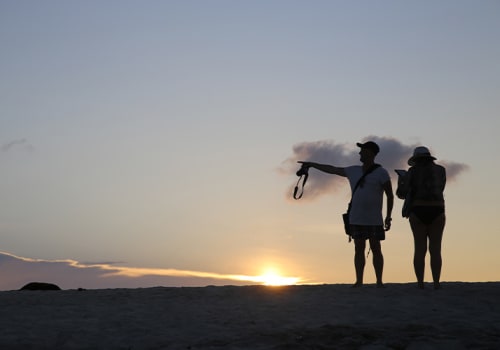
- Galapagos
- Ecuador
Best Of Ecuador & Galapagos
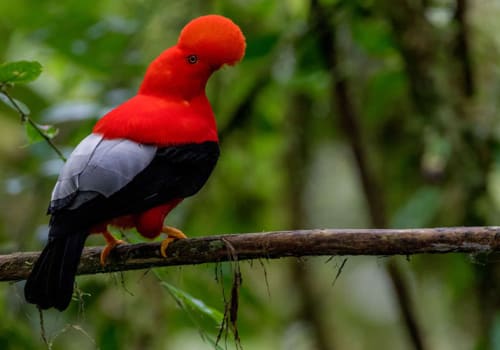
- Amazon
- Ecuador
Ecuador Cloud Forest & Amazon

- Galapagos
- Ecuador
Galapagos In Style

- Amazon
- Galapagos
- Ecuador
Galapagos & Amazon

- Galapagos
- Ecuador
Galapagos & Andes
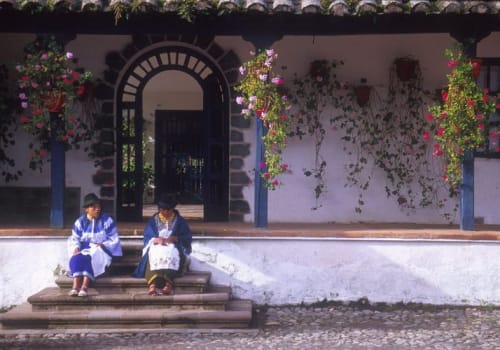
- Amazon
- Ecuador
Quito To Amazon

- Galapagos
- Ecuador
Avenue Of The Volcanoes & Galapagos
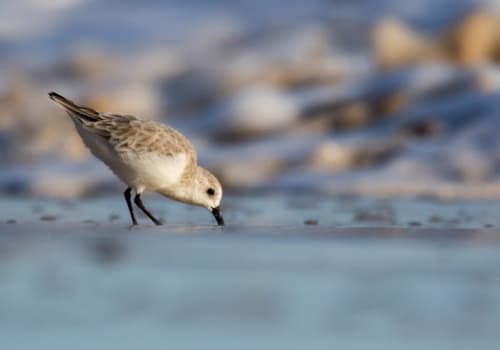
- Galapagos
- Ecuador
Galapagos Camping Adventure

- Galapagos
- Ecuador

